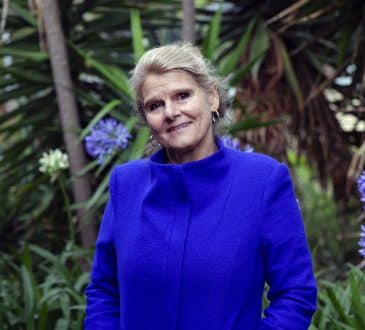Top of the Funnel Marketing: What you need to know

The toughest place on the journey to making a sale is making your customer aware of your product in the first place. Whether or not they buy anything from you the first time they come across your product, you’re planting the seed for future purchases.
That is why putting resources into top-of-the-funnel marketing is so essential: the purpose is to get as many people aware of your product as possible, knowing that a percentage of these people will convert.
What is Top-of-the-Funnel Marketing?
A frequently used metaphor in marketing is the funnel. It’s an easy way to visualize the stages of marketing a product, from the initial stage where you’re just trying to get people to know about your brand in the first place (top of the funnel), to the final stage of conversion, when they actually make a purchase (bottom of the funnel).
Just like an actual funnel, the top of your marketing funnel is the widest, because you are reaching out to the broadest section of your potential audience as possible. You’re really focused on maximizing engagement with the people who don’t already know about your brand. The more people that know about your product, the better your chances of actually encouraging a sale.
Here are some things to keep in mind when buidling top-of-the-funnel marketing initiatives:
- Do your audience research
The top of the funnel is meant to garner the largest section of your potential audience, but that doesn’t mean you’re just putting out ads and campaigns indiscriminately. To maximize efficiency, you need to have a really good sense of who your target audience is, where they are, and what they like.
How old are they? Do they live in urban or rural areas or both? Downtown or suburbs? How much money do they make? What are their hobbies? What are the problems in their lives that they need fixing? What social media platforms are they on? What websites do they visit? What kinds of magazines do they read? What TV shows do they watch?
The answers to these questions will give you invaluable insight into who your customers are and the best places to reach out to them.A great tool for this is to create characters that personify the different traits of your various target customers. Give them names, ages, careers, income brackets, family structures, hobbies, reading tastes and a sense of what they do online. Honing in to this level will make it easier to see who they are, what they need, and how you can best market to them. It also accounts for the fact that you’re likely targeting a range of different types of people, who may need to be marketed to in different ways and through different platforms. This allows you to consider the appropriate methods to target all of them.
- Focus your messaging
As the old saying goes, “you only get one chance to make a first impression.” And top of the funnel marketing is all about first impressions. In order to make a good one, you need to be extremely clear about brand messaging. The potential customer needs to understand right away what your product is, and why it would make their life better. If they get that immediately, they’re much more likely to be on board and to stick around to learn more, moving further down the funnel.A lot of this, then, comes down to the elevator pitch. You need to be able to explain what your product is, why it’s unique, who needs it, and why, in one simple sentence. If this is crystal clear, it won’t just make it easier for you to explain – it will make it easier for your customers to tell their friends about it, thereby expanding your potential customer base and increasing your upper-funnel marketing.
- Amplify the message and measure the results
Now you know what your message is, you know who your customers are, and you know where they are most likely to see your message. The next big step is to put it all out there. You might be taking out TV spots or magazine ads, or you might be making marketing videos, doing pop-ups at festivals, or creating sponsored content. So much of this depends on who your customers are and what they like, as well as the budget in place for the initiatives.Upper funnel marketing initiatives are often the most challenging to put together and the most difficult to measure the results of. By nature, they are less reliant on concrete assets (such as blogs, newsletters or social media posts), and more reliant on initiatives that drive interest and generate buzz. But just because it’s challenging doesn’t mean it’s impossible. There is always a way to measure at least some part of an upper-funnel campaign. Think outside of the box and get creative when considering how to measure the effectiveness of the campaign you are planning. Though it might not be apparent at first, there is always a way.
For example, at StickerYou, we recently opened a retail location, StickerYou: The Store, in Toronto, Canada. The retail store is a top of funnel marketing initiative to drive online traffic by raising brand awareness of both the company, and our products, which include custom stickers, labels, decals, temporary tattoos, and iron-on transfers.
Instead of looking to the traditional model of measuring retail ROI (ie. product sold vs. expenses) to measure effectiveness, we considered what the ultimate goal is (to drive online traffic and conversions) and structured a system of goal measurement that reflected the purpose of the store. By considering the exterior and interior branding as brand awareness initiatives, this allows us to consider pass-by traffic and in-store visits as impressions. By measuring these impressions and comparing them against online ad spend, we are able to construct a framework to measure the results of the initiative.
Written by Andrew Witkin.
Have you read?
# Best CEOs In The World 2019: Most Influential Chief Executives.
# World’s Best Countries To Invest In Or Do Business For 2019.
# Countries With The Best Quality of Life, 2019.
# Most Startup Friendly Countries In The World.
Add CEOWORLD magazine to your Google News feed.
Follow CEOWORLD magazine headlines on: Google News, LinkedIn, Twitter, and Facebook.
This report/news/ranking/statistics has been prepared only for general guidance on matters of interest and does not constitute professional advice. You should not act upon the information contained in this publication without obtaining specific professional advice. No representation or warranty (express or implied) is given as to the accuracy or completeness of the information contained in this publication, and, to the extent permitted by law, CEOWORLD magazine does not accept or assume any liability, responsibility or duty of care for any consequences of you or anyone else acting, or refraining to act, in reliance on the information contained in this publication or for any decision based on it.
Copyright 2024 The CEOWORLD magazine. All rights reserved. This material (and any extract from it) must not be copied, redistributed or placed on any website, without CEOWORLD magazine' prior written consent. For media queries, please contact: info@ceoworld.biz
SUBSCRIBE NEWSLETTER












